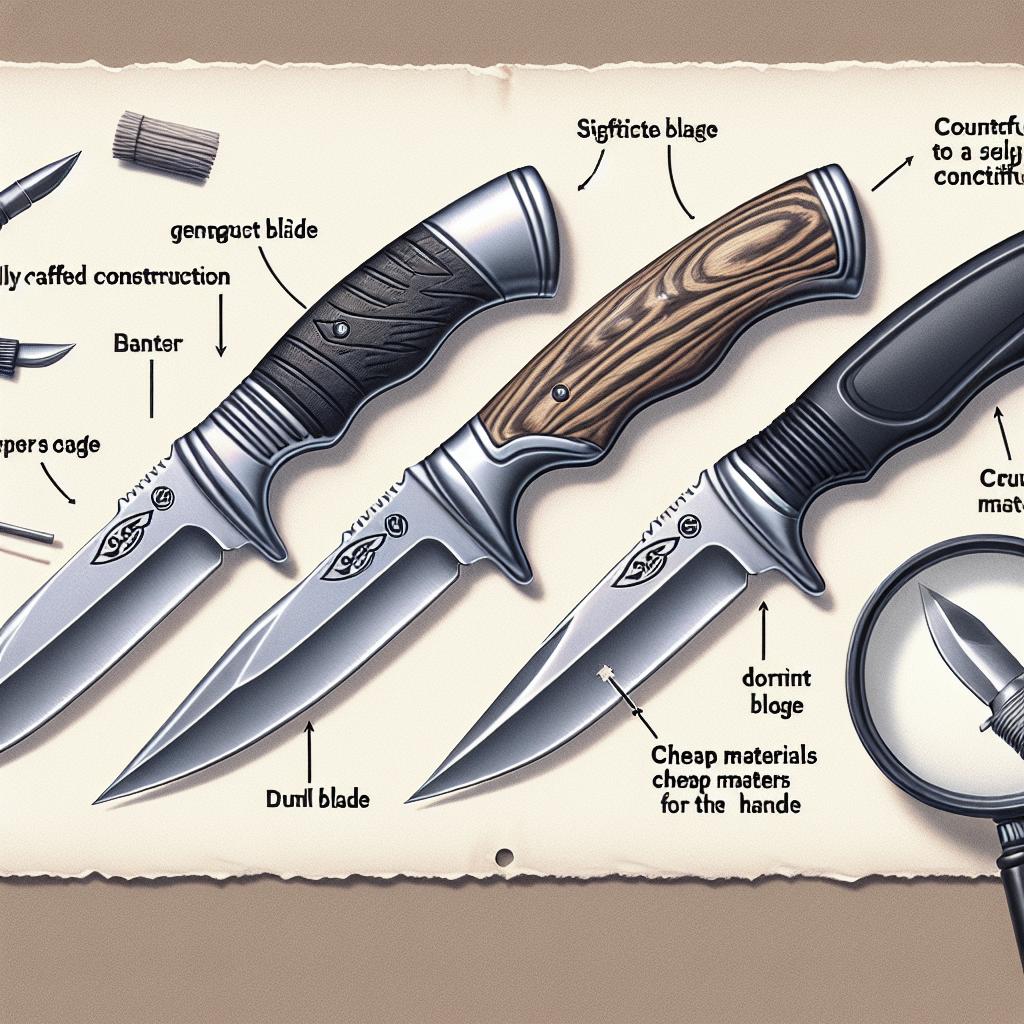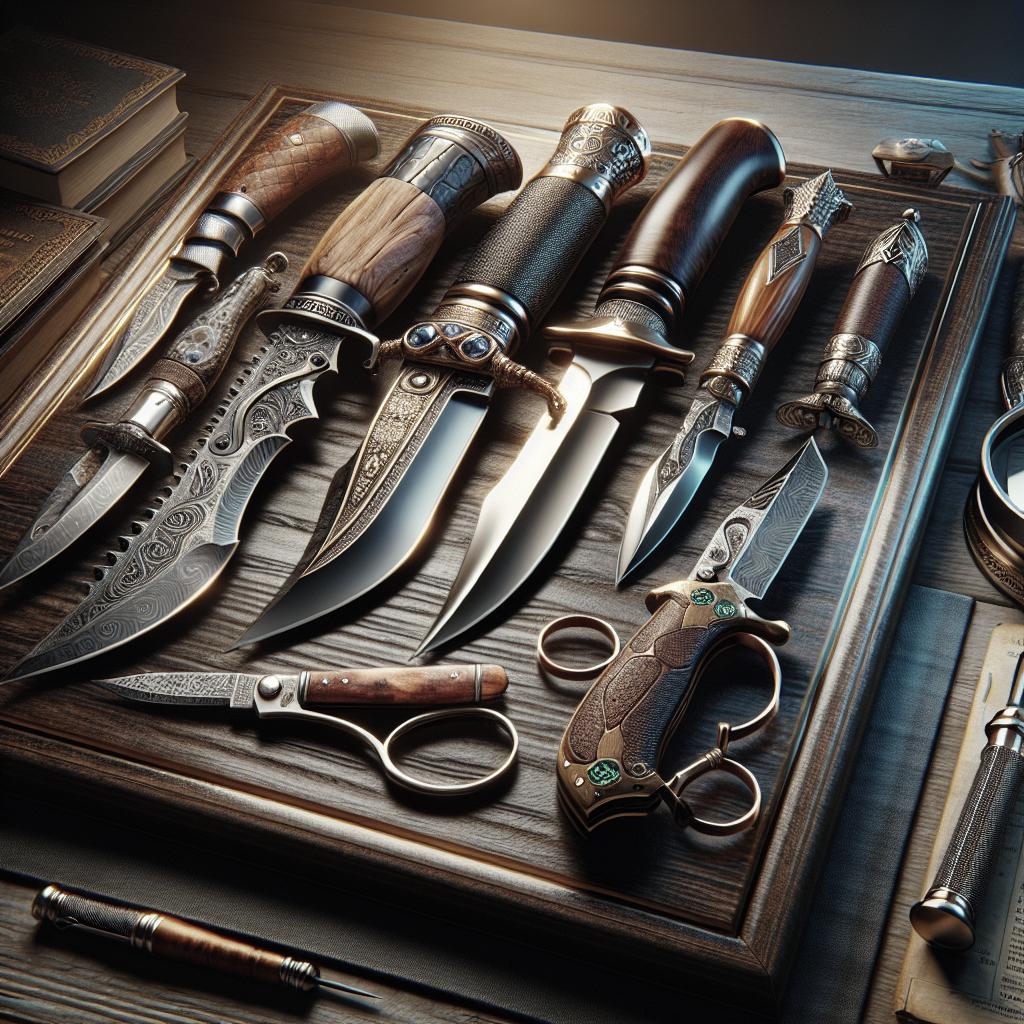How to Spot a Counterfeit Knife
In a world overloaded with non-genuine products, spotting a counterfeit knife requires skillful observation and knowledge. This guide empowers both collectors and everyday users with tactics to identify fake knives through visual cues and informed decision-making. From understanding the intricate characteristics of high-quality knives to knowing the profound history of trusted brands, this post delves into practical strategies for recognizing counterfeits, the consequences of possessing them, and the best ways to ensure you purchase genuine products. We also explore the economic and industry impacts of fakes and potential hazards of using them. By following these insights, you can make smarter choices and safeguard your investments.
Understanding Authentic Knives
Characteristics of High-Quality Knives
Authentic, high-quality knives are distinguished by their superior materials and craftsmanship. Premium blades are usually made from top-notch steel, resulting in durability, sharpness, and resilience. The handle, another critical aspect of a high-quality knife, is crafted for both comfort and firm grip, often using materials such as hardwood, G10, or Micarta.
The balance and weight distribution of a knife also reveal its authenticity. Real knives maintain a perfect balance between the blade and handle, making them easy to maneuver. A seamlessly aligned tang and functional elements like locks and hinges indicate meticulous construction and add to the overall utility of the knife.
Know the Brand and Its History
Familiarity with reputable knife brands and their history is crucial in identifying genuine products. Brands like Benchmade, Spyderco, and Victorinox have longstanding traditions of quality and innovation. Understanding the signature features and patterns of these brands can help distinguish their authentic products from counterfeit versions.
Each reputable brand often has a story behind its design, materials, and production techniques. Digging deep into this history offers insights into what sets an authentic knife apart, and aids in spotting inconsistencies that are common in counterfeit attempts. This historical knowledge arms collectors and enthusiasts with the know-how to make more informed purchasing decisions.
Spotting the Fakes
Visual Cues That Identify Counterfeit Knives
Counterfeit knives can often be spotted through careful examination of their appearance. Indicators such as uneven or unclear logo printing, poor finishing, and awkwardly assembled parts often signify a counterfeit blade. Comparing detailed images of genuine knives to suspected fakes can help expose disparities.
Fakes might exhibit noticeable imperfections in symmetry and material quality. Pay attention to things like misspelled words on the blade or handle, an unusual number of screws, inconsistent screw placements, and overall build quality. A thorough visual inspection is the first line of defense against counterfeit products.
Too Good To Be True
One of the strongest red flags for counterfeit knives is a deal that seems too good to be true. Authentic knives, particularly those from reputable brands, come with a price tag that reflects their superior craftsmanship and materials. If an offer appears unusually cheap, it warrants skepticism.
Counterfeiters commonly lure buyers with drastically reduced prices. Keep in mind that while savings are appealing, the true value lies in the knife’s longevity and reliability, which are compromised in fake versions. Always evaluate offers critically, understanding that authentic quality does not come inexpensively.
Trusting in Others
Relying on expert reviews and recommendations is a worthwhile strategy to avoid counterfeit knives. Communities and forums dedicated to knife enthusiasts often share trusted experiences and comparisons that can guide informed purchases. Engaging with these groups can provide firsthand accounts and warnings against counterfeits.
Additionally, building relationships with authorized dealers and retailers whose integrity you can count on adds a layer of protection against purchasing frauds. They typically provide guarantees, warranties, and after-sales support, which are rarely offered with counterfeit products.
The Consequences of Counterfeits
Impact on the Knife Industry and Economy
The proliferation of counterfeit knives negatively affects not only individual collectors but also the broader knife industry and economy. Counterfeit sales lead to significant revenue loss for genuine manufacturers, stifling innovation and quality improvement as resources are diverted to combat fakes.
Moreover, counterfeits can damage the reputation of well-respected brands, leading to a loss of consumer trust. By choosing authentic products, consumers support industry growth and contribute to sustaining craftsmanship and innovation in knife-making.
Potential Dangers of Using Counterfeit Knives
Counterfeit knives pose substantial risks due to lower-quality materials and poorer construction. They often lack the safety features found in genuine knives, increasing the risk of accidents. A compromised blade or handle can result in injury during routine tasks.
In survival situations, relying on a counterfeit knife could lead to dire outcomes. A low-confidence tool that fails when needed most is far more costly than any initial savings gained from purchasing a fake. Used progressively, counterfeit knives expose users to long-term safety risks.
Where To Buy Genuine Knives
The Risk of Purchasing Knives From Unverified Sellers
Purchasing knives from unverified sellers poses a significant risk of acquiring counterfeits. These sellers may not adhere to quality standards, selling inauthentic products at discounted prices. As a result, customers often find themselves with knives that fail to meet expectations in performance and safety.
It’s crucial to research the credibility of a seller before making a purchase. Reading reviews, checking vendor credentials, and verifying through official brand websites can help confirm the legitimacy of a seller. The peace of mind from knowing you’re buying from a verified source is invaluable.
Trusted Sources and Authorized Dealers
To ensure authenticity, it’s best to purchase knives from trusted sources and authorized dealers. Brands often list their official partners and dealers on their websites, which can be a reliable point of reference. These partners follow strict guidelines and standards to provide genuine products.
Authorized dealers often offer customer support, warranties, and after-sales service, enhancing the purchase experience. Establishing a relationship with these vendors provides ongoing benefits, including access to new product releases and exclusive offers that uncertified sellers cannot guarantee.
Lessons Learned
| Section | Main Points |
|---|---|
| Understanding Authentic Knives | Quality materials and craftsmanship; brand knowledge. |
| Spotting the Fakes | Visual cues; beware of too-good-to-be-true offers; trust experienced collectors and experts. |
| The Consequences of Counterfeits | Hurts industry and economy; potential safety risks. |
| Where To Buy Genuine Knives | Avoid unverified sellers; rely on authorized dealers. |


